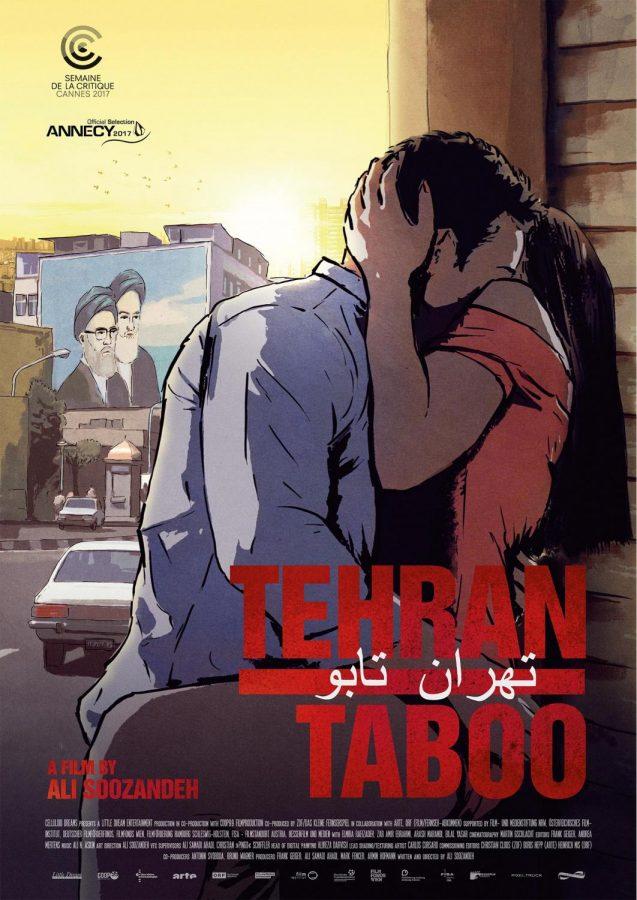‘Tehran Taboo’ Is a Minor Masterpiece
A poster for Tehran Taboo, a film by Ali Soozandeh.
February 13, 2018
“Tehran Taboo,” an Austrian-German animated film by Ali Soozandeh, moves through the interwoven lives of three women in Tehran, Iran — each desperately trying to make a future from complicated romantic or sexual circumstances.
Strongly representative of the social and personal oppression of women in the Middle East, the narrative brings a wide array of colorful and unique characters with multi-layered conflicts into a complex world.
Soozandeh demonstrates a knack for writing short dialogues that communicate much more than what appears on the surface. Coupled with thoughtfully chosen scenes, these characters are depicted in a way that is approachable and almost familiar. While Soozandeh’s direction explores some of the darker depths and truths of mankind, his style also inspires wonder in a handful of moments. Actions are driven by thoughtful and understandable characters who are intricately developed.
The animation style is one of the film’s biggest selling points. Nearly every figure is animated through rotoscope technology, a stylistic decision that heightens the intimacy with which these women are seen. It dramatically emphasizes the physical presence and plight of the characters, focusing on the people and their decisions rather than their mandated reactions to their world or immediate surroundings. The use of rotoscope bridges the distance between the idealized artifice of childhood and the inevitable, impassioned responsibility of adulthood.
Most of the backgrounds and objects are detailed, but flat or underdeveloped. These simple textures resemble the worlds of a Telltale Games series, a stark contrast to the beautifully fluid characters. These animated characters look more life-like than those in any other style. The actors’ nuanced performances, mannerisms and slightest facial expressions are able to be captured and artistically rendered. The realistic animation of the eyes is the most impactful detail. Soozandeh evokes and animators capture real emotion in these faces, creating a unique empathy and closeness between viewer and character. If this decision to focus on faces over setting was a deliberate one — it was certainly the right call.
Exotic colors and the juxtaposition of fluid characters before relatively two-dimensional settings create a surreal, almost dreamlike image. Coupled with a smooth, atmospheric score, the film is occasionally lulling. The noncontinuous storytelling becomes slightly disorienting. With many characters crossing paths seemingly by coincidence, the story becomes either convenient or predictable. The handful of narrative threads make the story a bit confusing, and frequent transition of scenes make the film seem out of chronological order.
Still, the resolutions and conclusions are mostly satisfying. Like Nora Twomey’s Academy Award-nominated “The Breadwinner,” Ali Soozandeh’s “Tehran Taboo” engages international audiences with charming imagery interspersed with hard-to-face societal severity. Soozandeh clearly appeals to a more mature audience, fabricating inventive intricacies and references through what is seen or said, and creativity through what is more implicit. He meticulously composed a minor masterpiece, telling this story to near perfection. “Tehran Taboo” not only deserves to be told, but is worthy of being shared.
“Tehran Taboo” premieres Wednesday, Feb. 14 at Film Forum.
Email Tristen Calderon at [email protected].
























































































































































